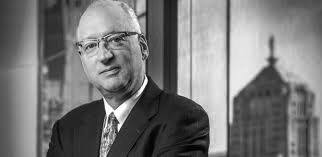This spring, together with a couple thousand others, I had the opportunity to attend the CLOC conference in Las Vegas. The conference was all about expectations around service delivery and the changing needs of the legal operations profession. Seems pretty on point in a profession undergoing change.
A couple of things struck me, however. First, there were relatively few lawyers from private practice in attendance and, second, a number of those who were there seemed mystified by the event. In considering this phenomenon – which is not the only time – it seems to me that this reflects a broader issue: how we relate to clients and how we deliver our services in a way that meets their needs.
Survey after survey will tell you that corporate legal buyers are dissatisfied in many ways with their law firms. Certainly, these concerns were not far below the surface at CLOC. In many ways, those of us in private practice often suffer from a failure to perceive circumstances from the perspective of the client. The reality is that we can gain and deliver more value with our clients if we think from the outside-in.
Put the client, not the firm, at the center of your thinking
If you are going to design a service delivery model that meets the needs of your client, then truly understanding those needs is a
base-line requirement. This is no flash of insight: client-centricity is hardly a new idea in business. Business-to-consumer businesses, particularly those focused on product design, have long been focused on the client/user experience. Translating that focus on the customer is trickier in business-to-business settings and even more complex in professional service environments. In professional services, we need to learn to elicit insights from the ultimate consumer of services, so we can start with the correct service requirements, design the solution set and then continuously improve upon service quality.
If you are a partner in a law firm, you may be thinking “we are all about understanding our client.” The reality, however, is that there is a huge gap between even great client service and a commitment to true client-centricity.
What is required for the latter is a whole different level of transparency and a willingness on all sides to embrace a true dialogue. At its most powerful, that dialogue can result in the co-creation of a wholly different service delivery paradigm. When it works best, thinking outside-in results in a structured discussion about how the two businesses (law firm and law department) work in tandem to deliver top-level services to the end-buyer of services – the law department’s internal clients. It requires a level of process transparency and financial transparency to which most firms and legal departments are unaccustomed and, oftentimes, find scary. It requires a willingness to have an honest discussion as to which organization is best equipped to handle certain parts of the work – and a recognition that the answer might be neither.
So, let’s just do some of that!
Outside-in thinking means designing and delivering services from the client’s point of view — considering the client’s service journey and the client’s end-to-end experience. This is much harder than it sounds, because everyone is hardwired to look at the world from his or her own point of view. Understanding other perspectives is an uncommon skill to begin with – and most organizations don’t take the time and effort to cultivate this critical competency in its client-facing personnel. This is particularly true with lawyers. By nature, we are siloed creatures.
In addition, the organizational structure of most law firms, and most legal departments, is often a silent barrier to client-centricity. In the vast majority of organizations, the structure reflects the composition, specialization, or area of focus of the people who work there, rather than the people who are buying the services. In this environment, each team member is the owner of a small piece of the client experience. Each team member’s perspective is limited by boundaries that are difficult to conceptualize. In this environment, seeing the whole field is difficult. If all you have is a hammer, everything looks like a nail. In other words, we are predisposed to tackle problems with our own toolset, with our own repertoire of skills and knowledge. Navigating our own organizations to challenge and stress-test those assumptions can create perceived personal risk. Going back to the drawing board and asking what the best solution
might be, and identifying an optimal toolset for this particular problem, can be scary.
As if this weren’t enough, there are three other factors that make the outside-in approach very difficult:
The artisan lawyer
Most lawyers are simply unaccustomed to having a discussion about how they deliver legal services. They are stuck in an artisan mindset – fitting for the legal services market of the past but a barrier to solution design now. This artisan mindset goes to the heart of lawyers’ perceptions of themselves – credentialed professionals with very specialized expertise. There is a level of protectiveness around the delivery of services much like a covert operative would view tradecraft. In our industry, getting lawyers to recognize that this level of dialogue and transparency only enhances their value involves a significant change process.
The client is speaking, but who is listening?
Creating a dialogue implies that someone needs to be talking and someone needs to be listening. This sounds obvious, but truly thinking outside-in requires us not just to listen, but to listen with the intent to understand, rather than the intent to respond. The root cause of a client’s pain points isn’t always known to the clients themselves. Lawyers must resist the temptation to provide an answer before the problem is fully articulated; in most cases, this undermines the fundamental point of the voice of the client.
Change is hard – for everyone involved
The required solution sets sometimes (okay, rather often) require change from all parties. Change is hard, and in some cases, it is too hard for some organizations and some people. It is simply easier to buy a piece of technology or to whittle at the edges than it is to get people to actually change they way they operate. Whether it is a large event like CLOC or a one-on-one conversation with a client, there are multiple opportunities to think outside-in and then apply what we learn to raise our value to clients. It is not easy but competition in our industry only continues to intensify and this provides a way to differentiate ourselves and prove our value.


